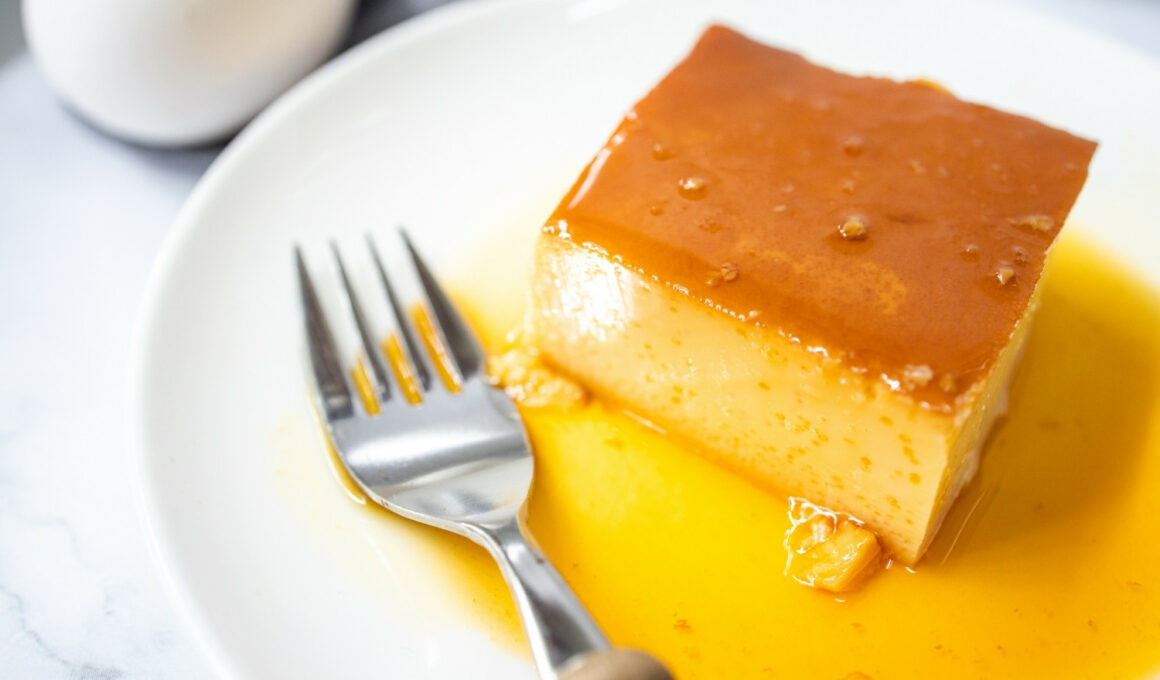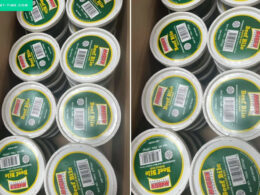In This Article Show
Flan, with its creamy texture and caramel sweetness, is a favorite in my household. Over the years, while making countless batches for family gatherings and quiet evenings, a crucial question has always lingered: Does flan need to be refrigerated?
We’ll address this vital query by drawing from my culinary experiences and the essence of flan’s ingredients. Proper storage isn’t just about maintaining its luscious taste; it’s also about ensuring every bite is safe and enjoyable. Let’s dig in.
The Composition of Flan
Flan, often dubbed as crème caramel in some parts of the world, boasts a simple yet rich ingredient list that lends it its signature texture and flavor. Understanding these ingredients is the first step in realizing why their storage method is so pivotal.
1. Eggs
The backbone of the flan’s structure. Eggs provide the custard with its firm yet delicate consistency. Being a perishable item, they’re a primary reason Flan has specific storage needs.
2. Milk or Cream
These dairy components give flan its creamy, melt-in-the-mouth feel. Dairy products, known for their perishability, require careful storage to prevent spoilage and maintain their fresh taste.
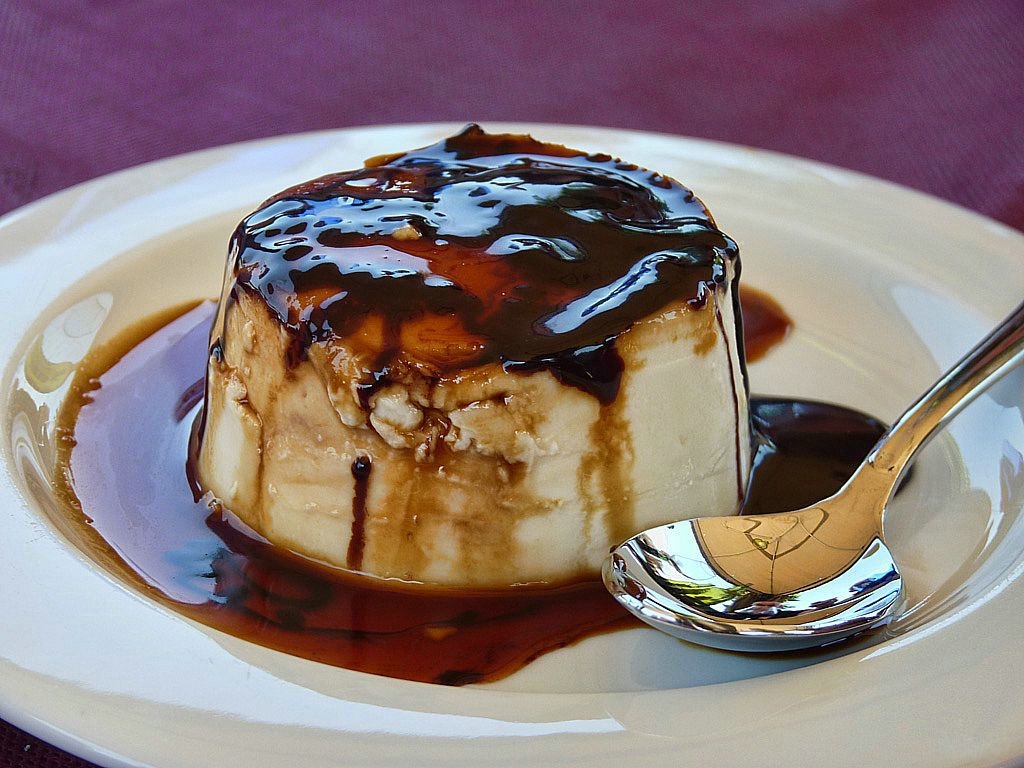
3. Sugar
Found in the custard mix and the caramel topping, sugar adds sweetness and contributes to the dessert’s overall texture. While sugar itself doesn’t spoil quickly, its interaction with other ingredients can affect storage requirements.
Great deals to snatch for your little ones 🎉
4. Vanilla and Other Flavorings
While not perishable like eggs or dairy, these add-ins provide a distinctive aroma and taste. Preserving these nuanced flavors is also a part of the storage equation.
Given its makeup of primarily perishable items, it becomes evident why flan can’t simply be left out like cookies or cakes. The ingredients not only define its taste but also set the guidelines for how we should store this beloved dessert.
The Importance of Refrigeration for Dairy and Egg-based Desserts
Dairy and eggs are staples in many delectable desserts, flan being a prime example. While they impart rich flavors and textures, they also come with their own set of storage challenges due to their perishable nature. Here’s a deeper look into why refrigeration is crucial for desserts like flan:
1. Safety First
Dairy products and eggs are prime candidates for bacterial growth, especially harmful ones like Salmonella. Keeping these ingredients cool through refrigeration significantly reduces the risk of foodborne illnesses.
2. Maintaining Freshness
Over time, exposure to warm temperatures can cause dairy to sour and eggs to deteriorate. Refrigeration slows down these processes, ensuring that the dessert retains its intended flavor and doesn’t develop an off-taste.
3. Texture Preservation
Warmth can also affect the texture of dairy and egg-based desserts. In the case of flan, it could become too soft or even runny if left out for too long. Refrigeration helps maintain the dessert’s signature velvety consistency.
4. Extended Shelf Life
Refrigerating dairy and egg-containing desserts prolong their edible life. While a flan might last a few hours safely at room temperature, in the fridge, it can be enjoyed for several days without compromising its quality.
5. Avoiding Contamination
When left uncovered and unrefrigerated, external contaminants, like dust or other airborne particles, can affect the dessert. Refrigeration, especially when the dessert is covered, offers an added layer of protection.
In essence, while the allure of a freshly made dessert can be tempting, the nature of its ingredients dictates the care it needs. For dairy and egg-based treats, especially something as delicate as flan, the fridge becomes their best friend, ensuring each bite is as safe as it is delicious.
Storing Freshly Made Flan
After preparing and unmolding that perfect flan, it is vital to ensure it’s stored correctly. This stage is as crucial as the cooking process, as it determines how well the flan’s taste and texture will be preserved. Here’s a guide to handling and storing freshly made flan:
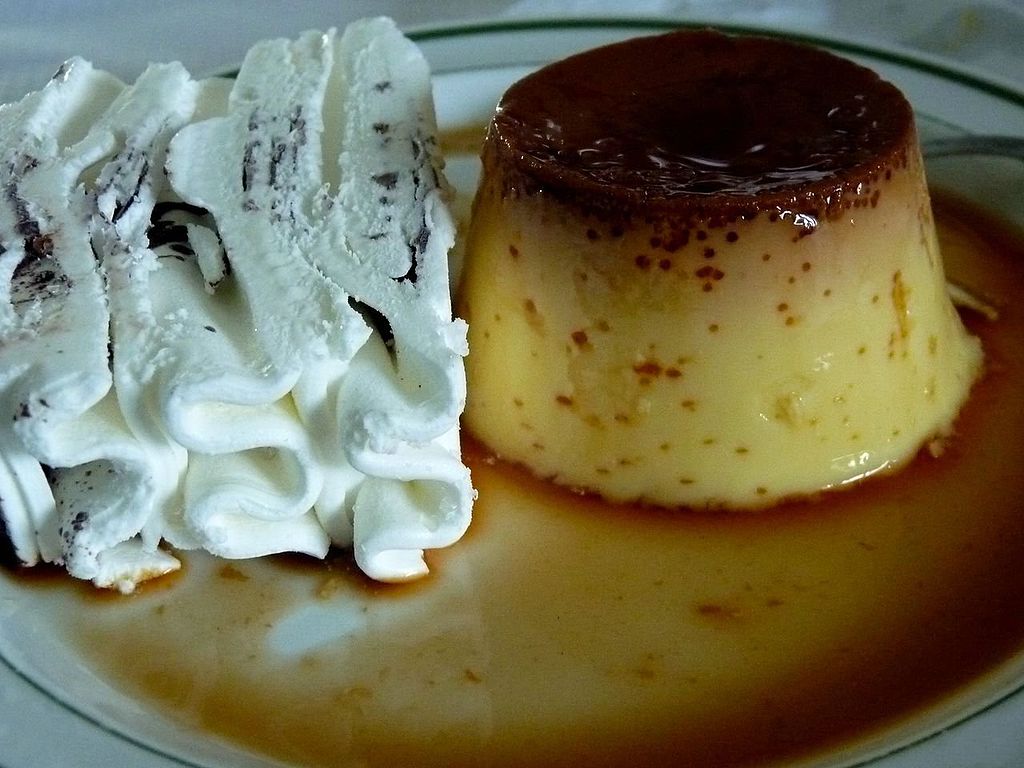
1. Cooling Down
It’s essential to let your flan come to room temperature before considering any storage steps. Placing a hot flan directly into the refrigerator can lead to condensation, affecting its texture and potentially making the caramel too watery.
2. Using the Right Containers
Once cooled, transfer the flan to an airtight container or cover the dish with plastic wrap or aluminum foil. This prevents the flan from absorbing other flavors in the fridge and drying out.
3. Refrigeration is Key
As emphasized before, the composition of flan necessitates refrigeration. Once adequately cooled and covered, place the flan in the refrigerator. This ensures the dessert remains fresh and retains its signature creamy consistency.
4. Label and Date
If you’re making multiple batches or are unsure when you’ll consume the flan, it’s a good practice to label it with the date it was made. This helps keep track and ensures you consume it while it’s still at its best.
5. Avoid the Freezer (Initially)
While flan can be frozen for longer storage, it’s best to first let it set and firm up in the refrigerator before considering this. Moving directly to the freezer can affect its texture.
By giving your freshly made flan the care and attention it needs during storage, you’re ensuring that every spoonful will be as delightful as the dessert’s first moment out of the oven. Whether you’re savoring it alone or sharing it with loved ones, these storage practices guarantee a delectable experience.
How To Serve Flan
When it comes to serving this classic dessert, presentation is just one aspect. The way flan is handled and presented can influence its taste and overall experience. Here are some pointers to ensure your flan is served in its finest form:

1. Bringing to Room Temperature
If stored in the fridge for an extended period, it’s a good practice to let the flan sit out for about 15-20 minutes before serving. This slight return to room temperature can enhance its creaminess and flavor.
2. The Unmolding Technique
One of Flan’s trademarks is its glossy caramel top. When inverting the flan onto a plate, ensure it’s done gently yet swiftly. This helps the caramel flow evenly, creating that beautiful glaze.
3. Serving Duration
While flan can stand out for the duration of a meal, especially when serving at parties or gatherings, it’s best not to leave it out for longer than 2 hours. Extended exposure to room temperature can compromise its texture and freshness.
4. Accompaniments
Flan pairs wonderfully with a variety of accompaniments. Fresh berries, a dash of whipped cream, or even a sprinkle of cinnamon can elevate the dessert. Depending on your preference, you can experiment and personalize your flan presentation.
5. Serving Utensils
Use a sharp-edged spoon or a thin spatula for serving. This ensures clean cuts and helps maintain the structure of the flan, especially when serving multiple portions.
6. Post-serving Storage
If there are leftovers after serving, ensure the flan goes back into the refrigerator promptly. As always, keep it covered to retain its moisture and protect it from other fridge odors.
The Shelf Life of Refrigerated vs. Non-Refrigerated Flan
Flan, like many desserts, has an optimal window of freshness. Its shelf life can be significantly influenced by how it’s stored. Let’s compare the expected durations for both refrigerated and non-refrigerated flan:
Non-Refrigerated Flan
- Immediate Consumption: If you’re planning to eat the flan within a few hours of making it, leaving it out at room temperature is acceptable, especially if you’re serving it for a gathering or meal.
- Risk Factors: However, given its dairy and egg composition, extended periods outside refrigeration (more than 2-3 hours) can make it susceptible to bacterial growth, impacting both its safety and taste.
- Texture Changes: The creamy consistency of flan might become overly soft or even runny when left out for too long.
Refrigerated Flan
- Optimal Freshness: In the refrigerator, a properly stored flan can maintain its peak freshness for 3-4 days, sometimes even up to a week depending on the specific ingredients and preparation method.
- Safety Assured: With the cool temperatures inhibiting bacterial growth, refrigeration ensures the flan remains safe to consume throughout its shelf life.
- Preservation of Taste and Texture: Cold storage helps the flan retain its signature creamy texture and rich flavor, ensuring consistency with every bite.
Long-Term Option – Freezing
While not the first choice for many, flan can be frozen to extend its life further. However, this might slightly alter its texture upon thawing. If you choose this route, consume the frozen flan within 1-2 months for the best results.
In summary, while flan might momentarily endure room temperature, its true longevity and quality are realized within the confines of a refrigerator. Cold storage is undoubtedly the way to go for those looking to savor the dessert over multiple days, safeguarding both its taste and your health.
Freezing Flan For Extended Storage
Sometimes, you might find yourself with more flan than you can consume in a short span, or perhaps you want to prepare in advance for a special occasion. Whatever the reason, freezing becomes a viable option for those looking to extend the life of their flan. Here’s what you need to know about this storage method:
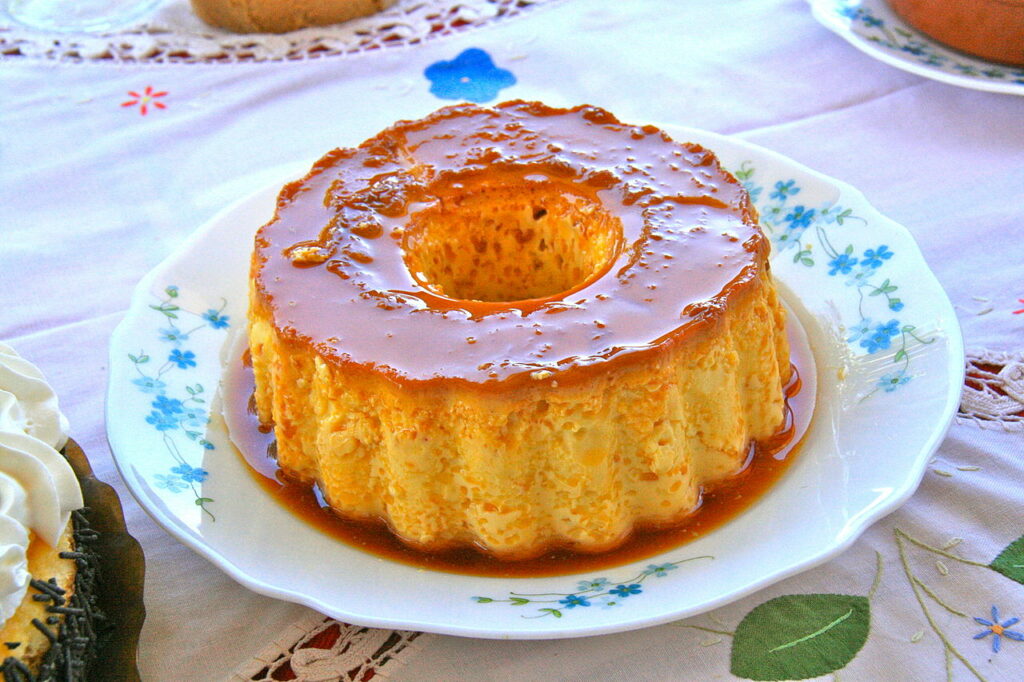
Preparing for Freezing
- Cool Completely: Before even considering freezing, ensure the flan is thoroughly cooled to room temperature.
- Use Proper Containers: Opt for airtight freezer-safe containers. If your flan is in a dish, wrap it tightly with plastic wrap followed by aluminum foil to prevent freezer burn and ensure freshness.
Freezing Duration
For the best taste and texture, consuming frozen flan within 1-2 months is advisable. While it can last longer in the freezer, the quality might diminish after this point.
Thawing and Serving
- Gradual Process: When you’re ready to enjoy your flan, transfer it from the freezer to the refrigerator and let it thaw slowly, ideally overnight. This gradual thawing helps retain its texture.
- Room Temperature Finish: Before serving, you might want to let it sit at room temperature for about 20-30 minutes to regain its creamy consistency.
Potential Reasons For Texture Changes
It’s worth noting that while freezing can preserve the flan’s taste, there might be minor changes in its texture. The custard could become a tad grainy, but this is usually subtle and doesn’t majorly impact the overall experience.
Once you’ve thawed your flan, it’s essential not to refreeze it. This can compromise its safety, taste, and texture. Make sure to consume the thawed flan within a couple of days.
While fresh flan is undeniably delightful, freezing offers a practical solution for those keen on longer storage. Following these guidelines ensures that even a frozen flan can be a treat to remember.
Wrapping It Up
Flan, a beloved dessert across cultures, shines best when stored and served with care. While enjoying it fresh is a treat, proper refrigeration ensures its longevity and taste. For those looking to savor it over an extended period, freezing is a viable option.
No matter your choice, understanding its storage needs will guarantee delicious bites every time.






